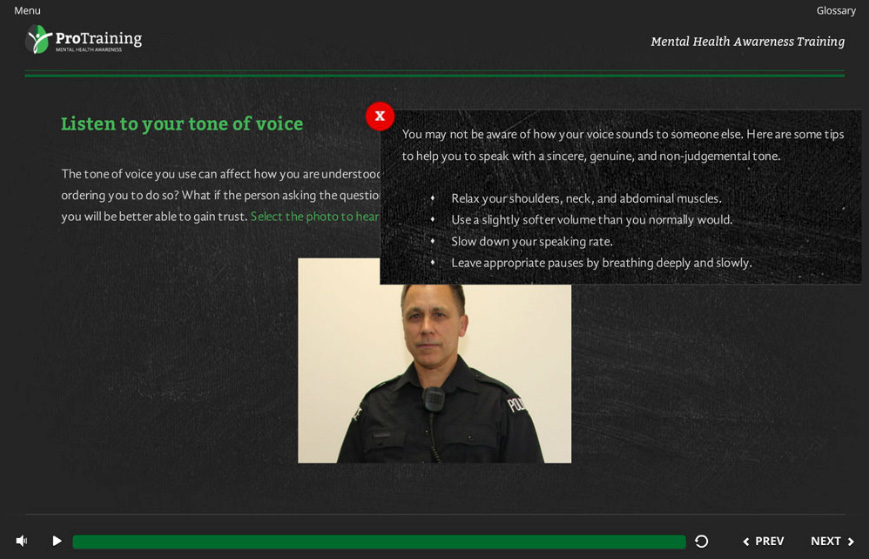As we head into a second quarter defined by social distancing, businesses are beginning to pivot their employee training programs to accommodate flexible and work from home arrangements.
The question is, which skills can be learned online, and which are better off learned in a classroom setting?
Employees need certain basic skills to carry out their jobs, whether they work in an office or in the field, at a computer or at a trade. Skills such as safe driving, lockout/tagout procedures, and even Microsoft Office translate easily to online learning. There are rules that can be observed and steps that can be checked off. They can be taught with bulleted lists or procedural graphics, and tested with multiple choice or true/false questions that have clear right or wrong answers.
But your employees also need certain “soft skills” – the people skills and personal attributes that are essential for dealing with colleagues and customers. Skills like self-awareness, work ethic, leadership, and teamwork. If soft skills are largely about dealing with others, how can you teach them in an online environment to a learner sitting alone at a computer?
eLearning can actually be an advantage in teaching soft skills, because it creates interactive virtual environments that can be carefully controlled. Here are some tips for approaching soft skills in your eLearning:
Break it Down
It’s often useful to break soft skills down into more concrete components or tips, which can be taught in a similar fashion to straightforward “hard” skills. If, for example, you wanted to teach effective teamwork, you could offer specific, practical guidelines around email communication, effectively structuring meetings, or respectful language. These more tangible skills can be easily taught and tested, but together they help the learner to develop better overall instincts and tools for working in a team.

In this slide from our course on mental health awareness for police officers, specific, concrete tips about tone of voice help learners master the soft skill of effective communication.
Realistic Scenarios
We often use realistic scenarios to both teach and test content, and this is especially important for soft skills, which require not just memorization and repetition, but critical thinking and attitudinal change. To carry on with the teamwork example, you could start with animations or videos that demonstrate first the negative effects of a lack of teamwork, to show the importance of that skill. Then you could ask the learner to identify specific things that could have been done differently in that scenario. Finally, returning to that scenario to show how effective teamwork could lead to positive outcomes.
Using a first person perspective can also be really effective for soft skills, as it helps learners to apply more abstract concepts to the real world. Presenting learners with a situation as if they are living it and asking them to choose an action or response immerses them in the learning and allows them to practice their new skill.
Reflections
Reflective questions can also be a great way of fostering attitudinal changes. Prompting learners to reflect on their past experiences of effective or ineffective teamwork, and how those experiences made them feel, can emphasize the value of the skill at the beginning of the course. The learner doesn’t need to be told that teamwork is important, because they are remembering situations where they saw its value first hand. At the end of the course you can ask them to reflect again, to imagine situations where teamwork might help them with their jobs, or to reflect on specific ways that they can improve how they work on a team. While in a classroom learners may be reluctant to share such personal experiences, in an eLearning environment they have the privacy to reflect honestly and at their own pace.
In reality most of our courses are a combination of “soft” and “hard” skills –we might create a health and safety orientation that teaches the steps to properly use a fire extinguisher, but at the same time we’re also trying to teach more abstract concepts, like “safety is everyone’s responsibility.” We don’t differentiate between them, but emphasize the end goal of reducing the number and severity of safety incidents. Whether the required skills are hard or soft, it’s those ultimate organizational outcomes that matter.
